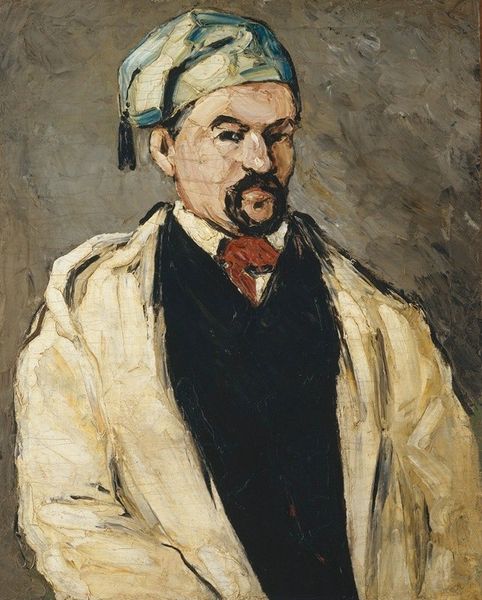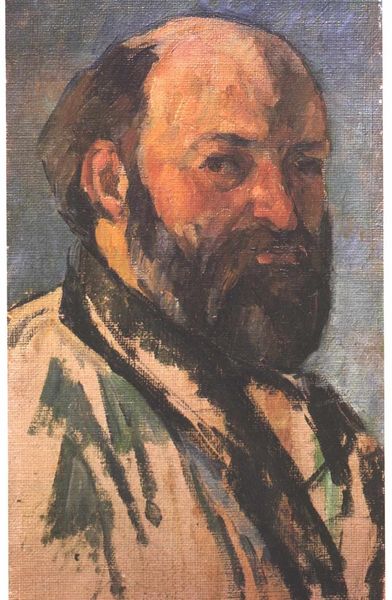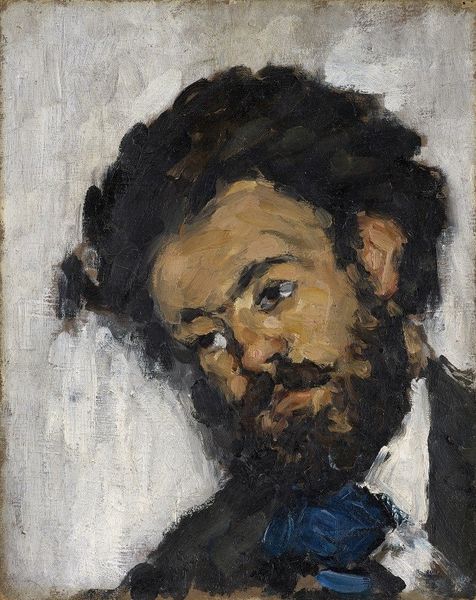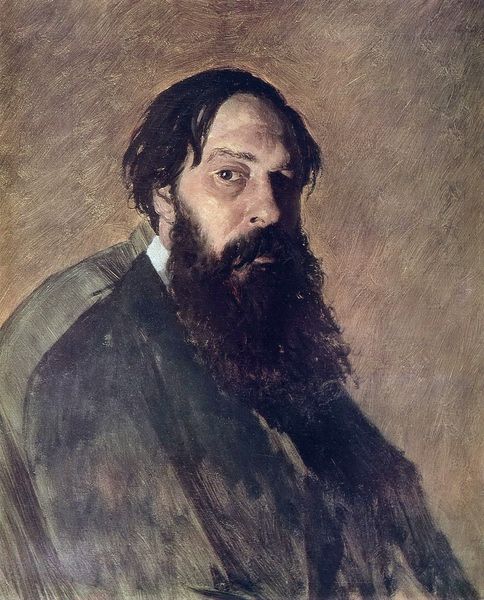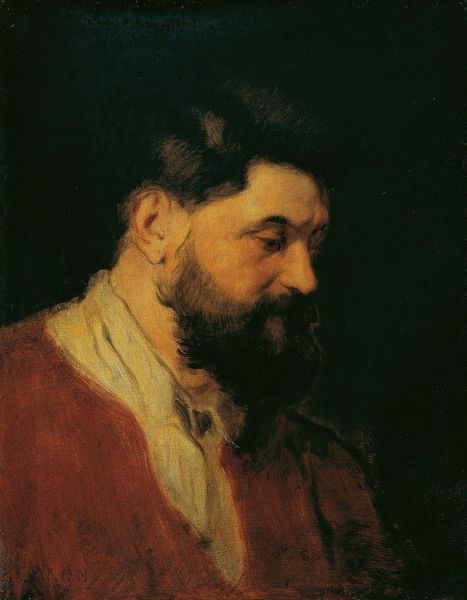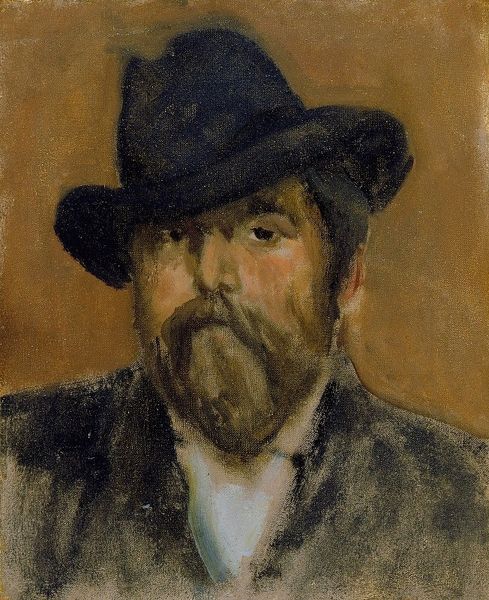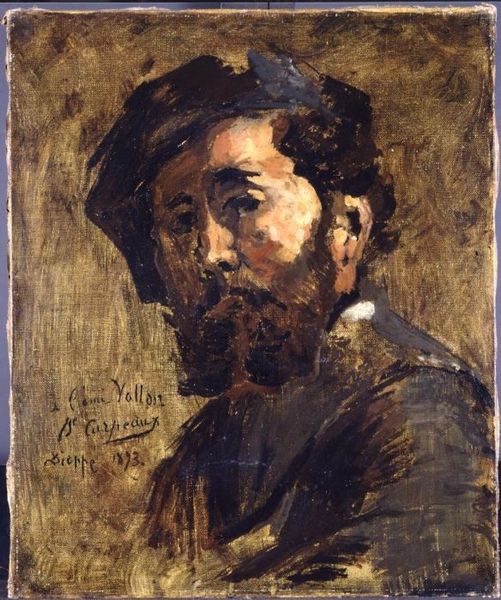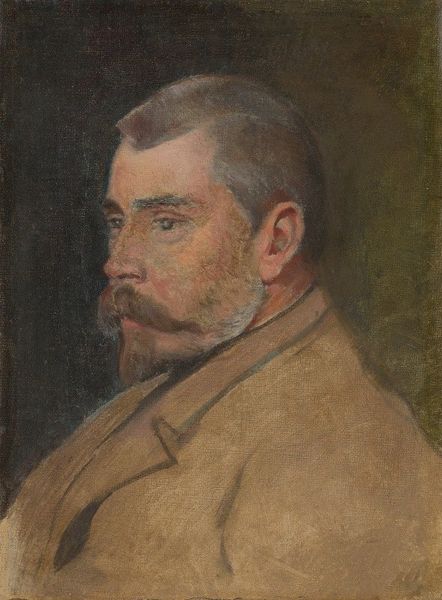
oil-paint
#
portrait
#
self-portrait
#
oil-paint
#
charcoal drawing
#
figuration
#
oil painting
#
expressionism
#
portrait drawing
#
portrait art
#
modernism
Copyright: Public domain
Curator: Immediately striking is this somewhat brooding "Self-Portrait" by Oleksa Novakivskyi, painted in 1910. What are your first thoughts? Editor: My eye goes right to the texture, the thick application of oil paint. You can practically feel the weight and density of the material. The way it’s layered on almost sculpts his features. Curator: Absolutely. This piece comes from a particularly formative period for Novakivskyi. It showcases an important shift towards more experimental and expressive forms. One could say it reflects a wider tendency in that period of artists exploring the very boundaries of representation. Editor: Indeed. Considering this as an oil painting allows one to explore the properties of the materials and the artist's manipulation of them to achieve the desired expression, and this makes me consider, too, that self-portraits are often as much about controlling image and representation as exploring the inner-self. Curator: Precisely. Artists using their own image became quite prominent at the beginning of the century. In self-portraits, the social context often plays out via status cues reflected in clothing, in pose, in the confidence—or lack thereof—conveyed to viewers. Editor: And this one is particularly interesting in this respect. It’s quite direct in its gaze. But there's also a rawness, a lack of refinement, in both the technique and in the overall presentation. Nothing here suggests this belongs to high society, instead it feels gritty, almost… elemental. You can imagine Novakivskyi confronting himself. The brown and cream palette feels particularly suited to expressing a material existence. Curator: Which speaks to Novakivskyi's unique position in the art world of his time, balancing national traditions with burgeoning modernism, all amidst increasing political turmoil. He played a pivotal role in developing a specifically Ukrainian modernist identity. Editor: Right, a challenging path made concrete here in the heavy brushwork and unwavering gaze of the artist himself. Makes you think about what materials they were using, what studio environments looked like at that time. It speaks to their everyday working process as craftspeople, perhaps even more than "high artists." Curator: Agreed, seeing it through the lens of material choices really emphasizes the cultural work embedded within this artistic expression. Editor: And I see it with renewed appreciation for both the artist’s technical skill and also for his commitment to working at the edge of representation itself.
Comments
No comments
Be the first to comment and join the conversation on the ultimate creative platform.
